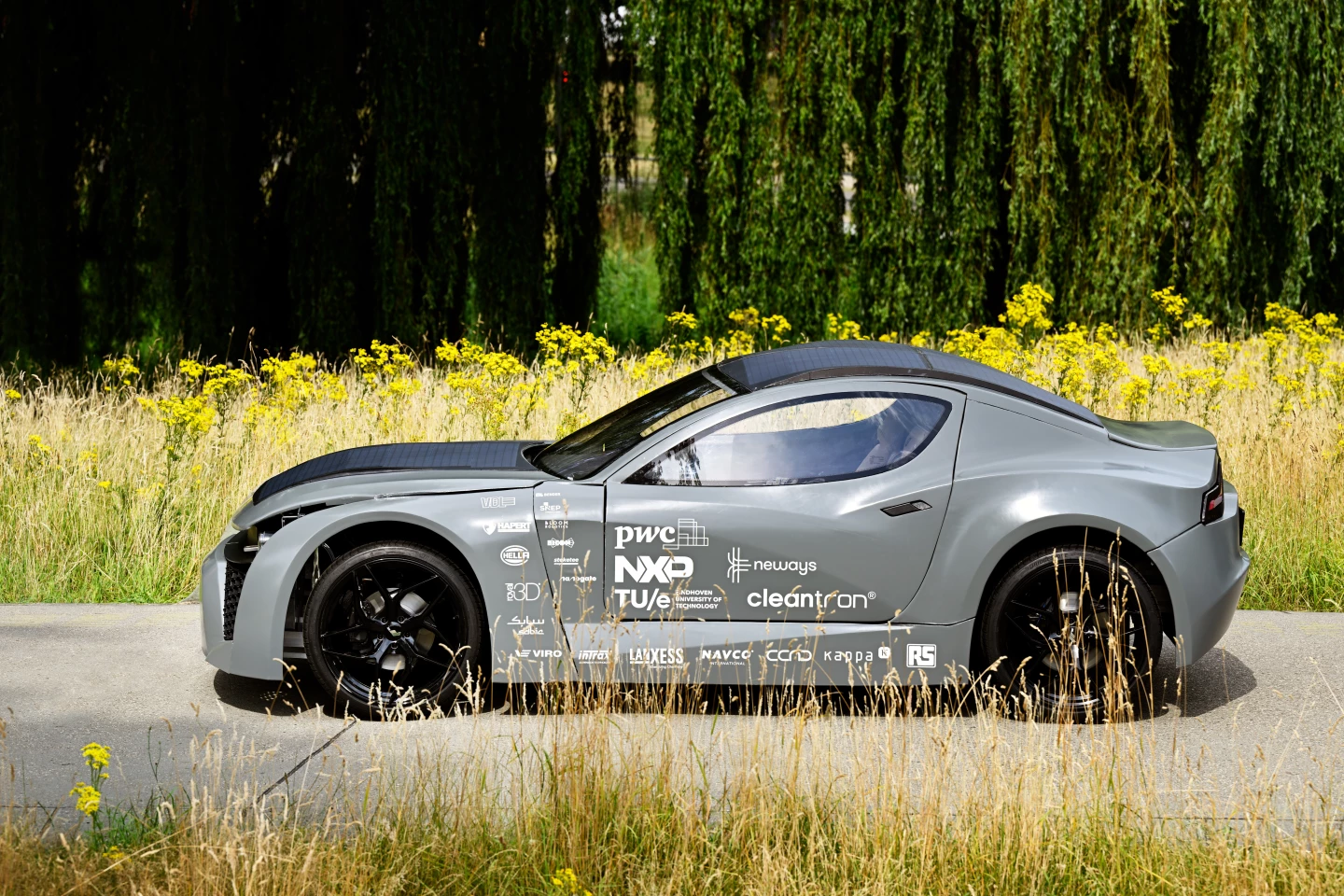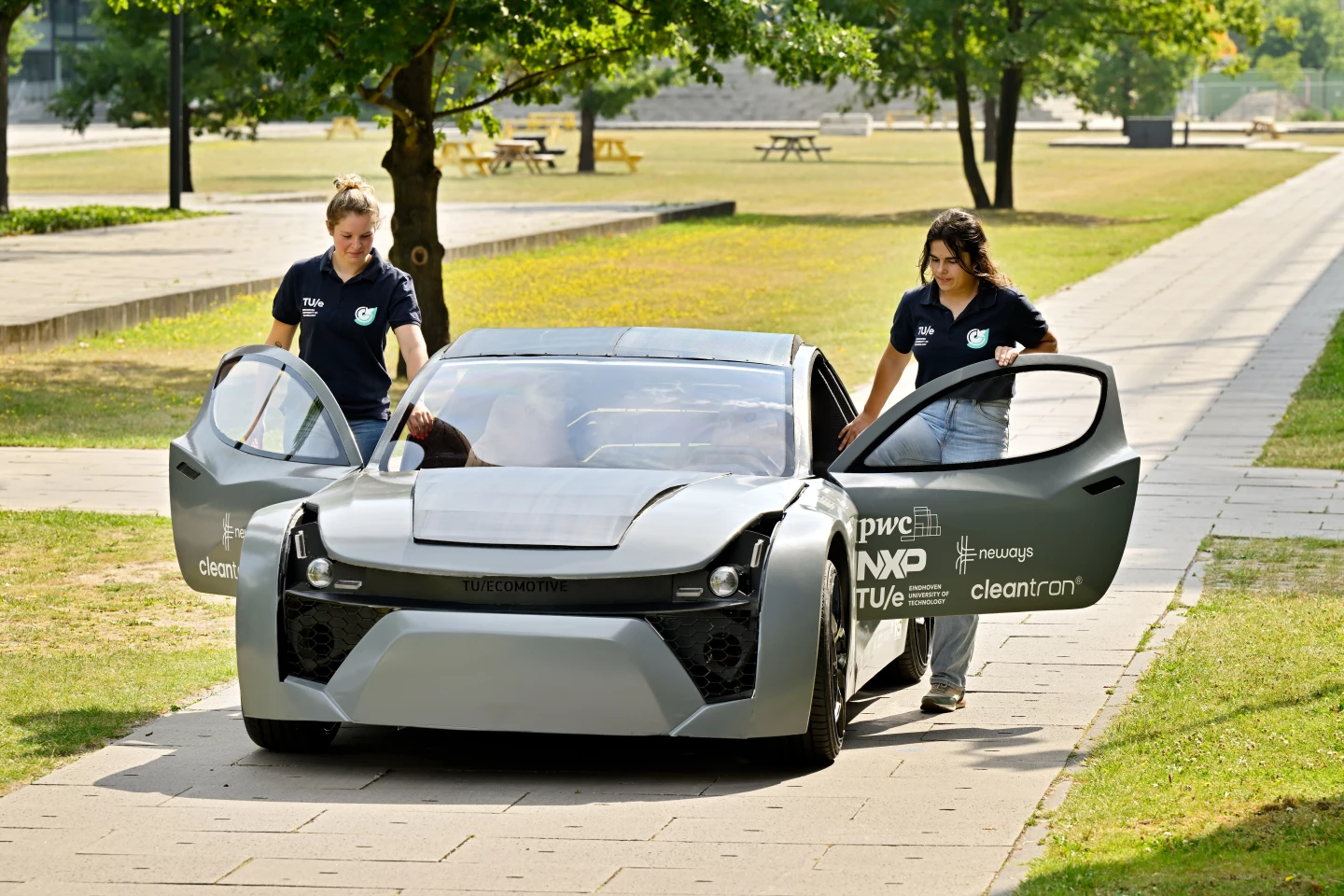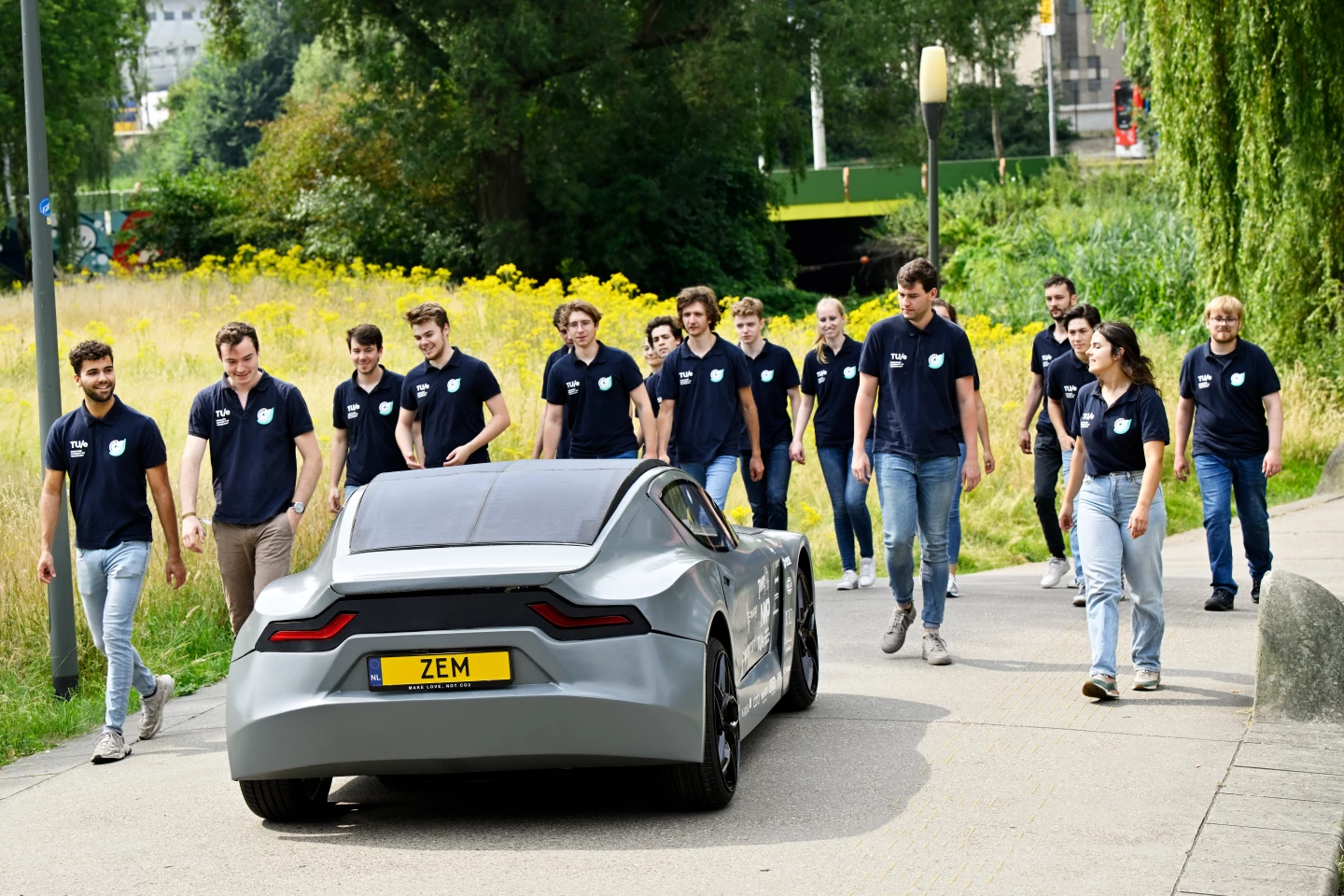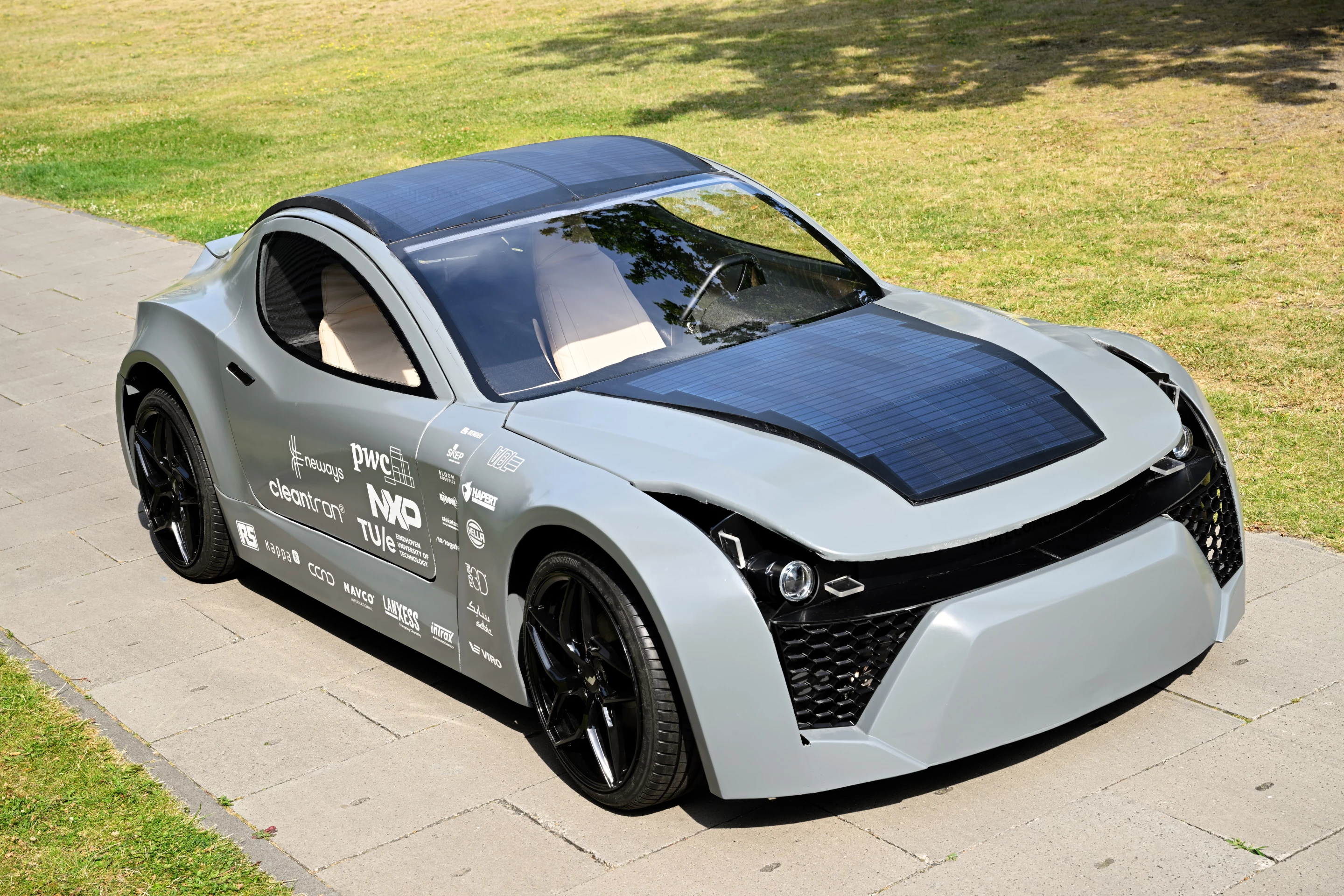A student team from the Eindhoven University of Technology has built a prototype electric passenger car that removes and stores carbon dioxide from the air as it rolls down the road, with the aim of capturing more CO2 than is emitted during the full lifecycle of the vehicle.
The project is the seventh for the TU/ecomotive students, following 2018's Noah concept and the Luca from 2020. The challenge for the Zem (EM-07) team was to build a carbon net-zero electric vehicle.
The team created a monocoque and body panels using additive manufacturing techniques to reduce material waste and produce "as little CO2 emissions as possible" while also making use of recycled plastics, which can be shredded and re-used for other projects.
The use of recycled plastics continues inside, along with sustainable materials like pineapple leather. Polycarbonate is the material of choice for the windows instead of glass, which the team says is better for the environment. And a modular infotainment system, modular electronics and modular lighting were installed as well, which can all be reused in other products.

The fact that the Zem is an electric vehicle means that zero carbon dioxide is emitted while it's being driven around. As the focus of this project was the car's carbon footprint and recyclability, details on the drivetrain are scant but the students have told us that there are nine 2.3-kWh modular battery packs installed, there's a 22-kW motor and there's "an old Audi differential with a relatively high gear ratio to increase the torque."
We also know that regenerative braking has been included to eke a little more out of the batteries, and photovoltaic cells have been incorporated on the upper surfaces to extend range. Bi-directional charging is cooked in too, and digital mirrors employed to reduce aero drag.
What looks like a fairly standard grille to the front actually flows to direct air capture technology – for which the students are seeking a patent – that scrubs the air as the vehicle moves along. The team claims that up to 2 kg of CO2 could be removed for every 20,600 km (12,800 miles) traveled per year at around 60 km/h (37 mph). Though this isn't a great deal on its own, if the technology was to be rolled out to the millions of cars on the road around the world then it has the potential to make a real contribution to decarbonization efforts.

The Zem's filter currently fills to capacity after 320 km (~200 miles), and the thinking is that such filters could be cleaned using green energy and the captured CO2 stored in a tank as the EV is topped up at charging stations, and then reused to capture the next batch.
What happens to the captured CO2 after drop-off isn't clear – though we have seen some interesting projects recently that show potential in dealing with such things, including using it to make more eco-friendly concrete, creating synthetic fuels and plastics from simple chemical building blocks and even putting the fizz in bubbly water.
"It is really still a proof-of-concept, but we can already see that we will be able to increase the capacity of the filter in the coming years," said team manager Louise de Laat. "Capturing CO2 is a prerequisite for compensating for emissions during production and recycling."
The students have also looked at what happens to the Zem at the end of its useful life, with a view to re-using or recycling as much of the car and its components as possible.

Work continues to improve on the concept and head toward carbon net-zero, with team members and the Zem heading to the US in August for a tour of universities and companies, in the hope that the concept will inspire others to take up the challenge.
"We want to tickle the industry by showing what is already possible," said the team's external relations manager, Nikki Okkels. "If 35 students can design, develop and build an almost carbon-neutral car in a year, then there are also opportunities and possibilities for the industry."
"We call on the industry to pick up the challenge, and of course we are happy to think along with them," Okkels continued. "We're not finished developing yet either, and we want to take some big steps in the coming years. We warmly invite car manufacturers to come and take a look."
Source: TU/ecomotive








